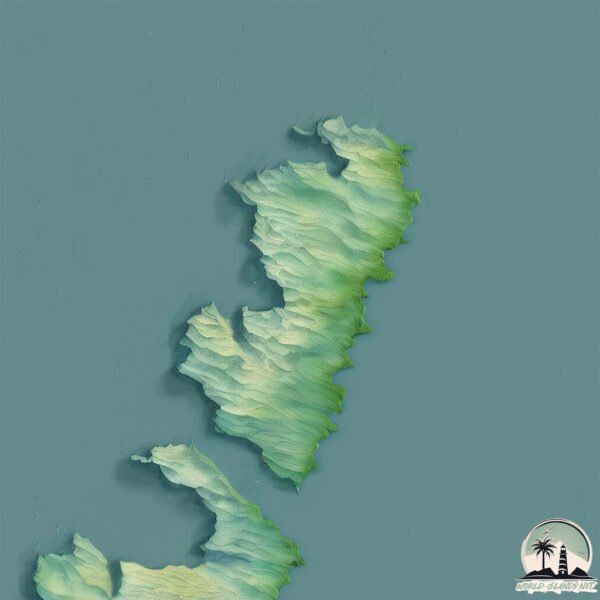Island of Rona

Welcome to Island of Rona, a Temperate island in the Inner Seas off the West Coast of Scotland, part of the majestic Atlantic Ocean. This guide offers a comprehensive overview of what makes Island of Rona unique – from its geography and climate to its population, infrastructure, and beyond. Dive into the details:
- Geography and Size: Explore the island’s size and location.
- Climate and Weather: Weather patterns and temperature.
- Topography and Nature: Uncover the natural wonders of the island.
- Infrastructure and Travelling: Insights on reaching, staying, and making the most of your visit.
- News and Headlines: Latest News.
Geography and size of Island of Rona
Size: 10.8 km²
Coastline: 30.1 km
Ocean: Atlantic Ocean
Sea: Inner Seas off the West Coast of Scotland
Continent: Europe
Island of Rona is a Medium Island spanning 11 km² with a coastline of 30 km.
Archipel: British Isles – A group of islands off the northwest coast of mainland Europe, including Great Britain, Ireland, and over 6,000 smaller islands, known for their rich history and cultural diversity.
Tectonic Plate: Eurasia – One of the world’s largest tectonic plates, the Eurasian Plate covers a significant portion of Europe and Asia. It’s characterized by diverse geological features, including the Ural Mountains, the European Plain, and the Himalayas formed from its collision with the Indian Plate.
The geographic heart of the island is pinpointed at these coordinates:
Latitude: 57.5486906 / Longitude: -5.97658329
Climate and weather of Island of Rona
Climate Zone: Temperate
Climate Details: Temperate Oceanic Climate
Temperature: Warm Summer
Climate Characteristics: Known for its moderate year-round temperatures with ample rainfall and no dry season. Warm summers are characteristic.
Topography and nature of Island of Rona
Timezone: UTC±00:00
Timezone places: Europe/London
Max. Elevation: 73 m
Mean Elevation: 35 m
Vegetation: Evergreen Needleleaf Forest
Tree Coverage: 70%
The mean elevation is 35 m. The highest elevation on the island reaches approximately 73 meters above sea level. The island is characterized by Plains: Flat, low-lying lands characterized by a maximum elevation of up to 200 meters. On islands, plains are typically coastal lowlands or central flat areas.
Dominating Vegetation: Evergreen Needleleaf Forest
Dominated by evergreen coniferous trees such as pines and firs, which retain their needle-like leaves throughout the year. These forests are often found in cooler climates. Island of Rona has a tree cover of 70 %.
Vegetation: 7 vegetation zones – Very Highly Diverse Island
Islands in this range are ecological powerhouses, showcasing a wide array of vegetation zones. Each zone, from lush rainforests to arid scrublands, coastal mangroves to mountainous regions, contributes to a complex and interdependent ecosystem. These islands are often hotspots of biodiversity, supporting numerous species and intricate ecological processes.
Infrastructure and Travelling to Island of Rona
Does the island have a public airport? no.
There is no public and scheduled airport on Island of Rona. The nearest airport is Stornoway Airport, located 81 km away.
Does the island have a major port? no.
There are no major ports on Island of Rona. The closest major port is PORTREE HARBOR, approximately 26 km away.
The mean population of Island of Rona is 1 per km². Island of Rona is Uninhabited. The island belongs to United Kingdom.
Continuing your journey, Island of Raasay is the next notable island, situated merely km away.
United Kingdom is classified as Developed region: G7: Group of Seven – Major advanced economies, including Canada, France, Germany, Italy, Japan, the United Kingdom, and the United States. The level of income is High income: OECD.
News – Latest Updates and Headlines from Island of Rona
Stay informed with the most recent news and important headlines from Island of Rona. Here’s a roundup of the latest developments.
Please note: The data used here has been primarily extracted from satellite readings. Deviations from exact values may occur, particularly regarding the height of elevations and population density. Land area and coastline measurements refer to average values at mean high tide.
